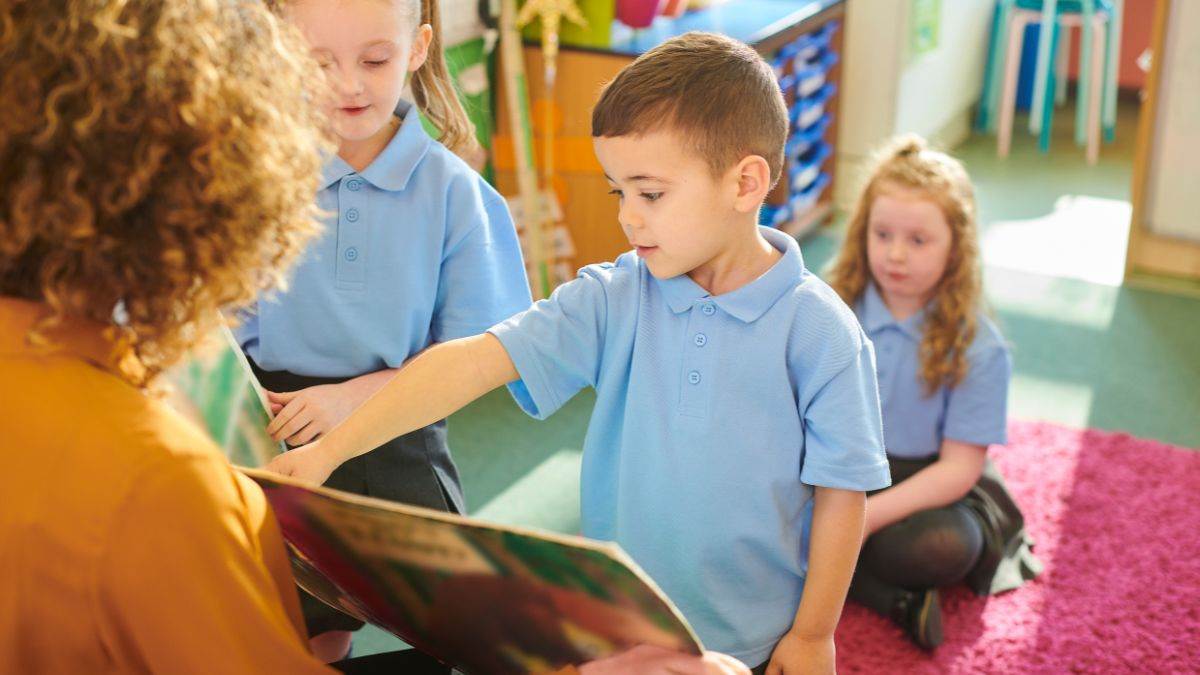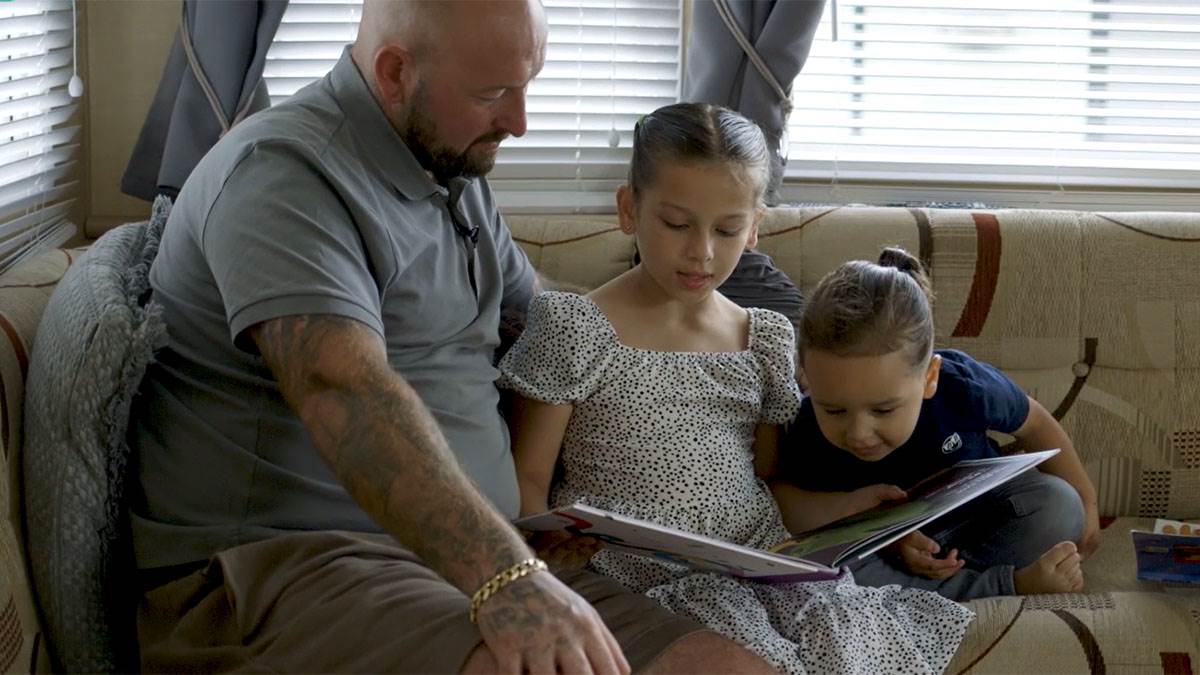Top tips to engage the whole school community with reading for pleasure
Published on: 25 March 2024 Author: Kiran Satti & Rachel Clarke
At BookTrust we know that teachers have lots of ideas for encouraging parents and children to read together. We asked Kiran Satti, Primary Specialist and Reading Teacher, to share a few of her brilliant suggestions.
It's a gift to be able to teach someone to read. It's also my view that without enjoyment, the reading skills children need to acquire are harder to teach. This is why my mantra is: engagement and enjoyment first.
In this article I share my top tips for translating the reading joy from the classroom, across the school and into the wider community to ensure all children develop a lifelong love and appreciation of reading.
Get children talking about books
Getting children talking about books is important for promoting enjoyment and building a community of readers. To do this you need books in your classrooms and library that children want to read.
Including books that relate to children's interests and that connect with them on a personal level (such as their cultural or social background or a different ability characterised by neurodiversity, seen or unseen abilities) really works. When books connect with children in this way, it removes any barriers and so they find it easier to talk about the books.
Involve children in choosing books
Involving children in selecting books for their classrooms and the library adds to the level of enjoyment. If you have pupil librarians or Pupil Diversity, Equity and Inclusion leaders in your school, getting them to consider which books to choose means that the book choices come from the school community, rather than just yourself, which increases the children's agency and makes them feel like valued members of the reading community. This in turn impacts on their relationship with books and reading so that they are more likely to choose to read.

Create a Story Escape Time
Many teachers find it hard to make time for story time but when they do, they're signalling to the children that they value books, reading and spending time with them on something so inclusive and nurturing of connection and community.
Making time for stories on the timetable gives reading for pleasure equal, or at times elevated, status to curriculum content. Reading for pleasure is a vehicle to enable children to learn the curriculum content.
Story time is a gateway into new worlds – it creates an inclusive, engaging and safe space for children to imagine and escape. It also creates shared moments where the stories become 'stories in common' that unite the members of the class forever – forever moments.
Giving the children a role in selecting the book to be read during story time is a really lovely way of making them feel valued. An easy way to do this is to place two books on a table with voting stations displayed. Then provide some counters and invite the children to vote on which books will be read. In addition to making the children feel valued and involved, teachers also gain an insight into the texts the class enjoy in their time together.

Whole school book battles
You can really build the excitement about books and reading by extending your classroom book votes to a whole school book battle. By taking the winning choices from the class book votes, you can create a whole school book vote. This acknowledgement of the children's book choices creates a buzz, encourages further reader recommendations, and provides a shared experience of finding out which book is the best!
There is also plenty of reading and re-reading involved and then when the winning books are placed in the school library they are likely to become popular loans as well as enablers to continue to develop a real sense of a reading community.
Make books and reading visible
Creating displays about books and reading signals to all members of the school community that reading is valued. Displays can include books, images of children and members of the community reading, and recommendations.
Reading is worth talking about, and so creating recommendation displays that prompt discussion is worthwhile. Displaying shared reading books with light-touch prompts for children to respond to (on sticky notes, mini whiteboards or talking tins) facilitates later discussions. These reading conversations then become part of the class's collective thoughts about the books that they read together.

Building links with parents
Parents are a vital part of our school communities and involving them in all aspects of reading is essential to ensure our children enjoy reading. All schools hold meetings with parents where teachers talk about children's progress and attainment in all aspects of the curriculum. But reading for pleasure often needs a more nuanced approach where we nurture organic relationships with parents.
Chatting to parents about books at the classroom door or school gate can be a good starting point. It shouldn't feel forced but, for example, be a moment to celebrate a conversation you've had with their child about a book or an invitation to borrow books from the school stock.
Another thing you could do is to create a class book to showcase the books you've read with the class and some of the children's favourites. Then when parents do come into school, they can take a look and so grow their knowledge of books and see which their children enjoy reading – it's a great way to plan for birthday or Christmas presents.

Being known as a teacher who loves books and reading will grab the parents' attention, and they are likely to want to tell you about the books they have in their homes and the books they've read with their children as well as seeking your recommendations. Parents value our opinions so when we give status to books and reading; they notice and appreciate the important role reading plays in their children's lives.
In addition to the light-touch and incidental approaches to building book links with parents, you can also create memorable experiences by inviting parents into school. This could be to see how you teach reading and phonics and unmask the mechanics of learning to read, but it could also be to take part in a story time with their children or for a really special cosy reading event with hot chocolate and sweet treats or a Teddy Bear's Picnic.
Balance is key when inviting parents in to the reading community. Events like this provide a window into what you do in school, but they also provide parents with models of how to support reading skills in a supportive, engaging way and facilitate many more shared reading moments at home.
Hold book quizzes
Who doesn't love a quiz! Another way to engage readers in a fun and engaging way is to create a book quiz based on the most popular reads in the classroom. This information can then form the basis of a whole school, or even whole trust, book quiz where families and siblings come together as a whole reading community to share the book joy!





